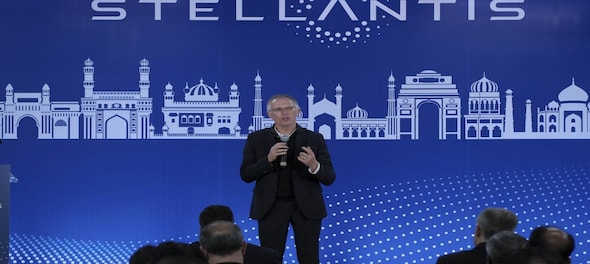
If all goes to plan, Stellantis — the manufacturer of automobile brands Citroen and Jeep, among others — could look to use India as an export base not just to South East Asia, but to European markets as well.
The company’s CEO, Carlos Tavares, told journalists in Chennai that while these plans could come to fruition in the next 12 months, its actual realization could depend on how quickly Stellantis achieves its cost targets.
“Our exports from India need to hit a quality number and a cost number first, and that is going to happen very soon,” said Tavares, “We can’t expect our teams to achieve targets at large because we first need to achieve our ramp-up level. But if we achieve our quality and cost numbers in the next 12 months, we will begin exports.”
However, the Stellantis boss admitted that these plans were “not a walk in the park”, and would require a great deal of work to get there.
“South East Asia is one of our target markets for exports from India; we can also test the European market,” he said, “It will be a big opportunity for India to export EVs to Europe at a cost-competitive rate. It isn’t decided yet, but this is what we are trying to do — our teams are seeing the potential and are working very hard.”
The Stellantis CEO is in India to visit his company’s plants in Hosur and Thiruvallur in Tamil Nadu. Stellantis is set to launch the EV variant of the Citroen C-3 in early 2023, and follow it up with the launch an “affordable” electric vehicle for “middle-class” customers at a yet-to-be-announced date.
Tavares stopped short of defining what price point permitted an EV to wear the ‘affordable’ tag, pointing out that the answer to that conundrum lay in price-volatility of rare metals and geopolitical tensions: “Remember that metals which go into an EV battery — nickel, cobalt and lithium — are scarce. We can expect not only a high cost for these raw materials but a big factor of volatility, which is a consequence of geopolitical tensions.”
He added: “So, prices are always set high to cover the volatility and everybody faces this problem — the price of an EV is going to be impacted by energy costs, even assuming that it’s green energy.”
‘No hurry to expand in India’
For the moment, Tavares is poring over details like the speed, fit, finish, localisation — Stellantis has 95 percent localisation levels in India — and service of the cars Stellantis manufactures. He insists that Stellantis is in no hurry to expand in the country.
“Given how we have gone about business in the last five to six years, we can wait for some quarters more to ramp up,” he said, “We are not chasing volumes and want to ramp up the right way. If we can do that right, volumes are a reward.”
However, by his own admission, India could be a rewarding market for Stellantis. The belief comes on the back of India’s projected 6 to 7 percent GDP growth for 2023, amid projections of a global slowdown. Slowdown or not, Tavares said there was reason to believe Stellantis will be well insulated from economic vagaries.
“We won’t be vulnerable to it (economic slowdown) because our volumes are limited and we are niche,” he said, “We can afford a market that’s slowing down because we limit ourselves to one part of the market.”
Tavares added: “Our break-even point is below 40 percent of our net revenues. So, that means even if something external happens, and our net revenues fall by 60 percent, we will still be alive.”
We will launch the EV variant of the C3 early next year, and we will have to see when we can launch an affordable EV that middle class customers can buy. Number one thing tonne done is clean energy, then infrastructure and then ask OEMs to design and manufacture EVs. Problem today is we are doing this upside down.
Check out our in-depth Market Coverage, Business News & get real-time Stock Market Updates on CNBC-TV18. Also, Watch our channels CNBC-TV18, CNBC Awaaz and CNBC Bajar Live on-the-go!


2024 Lok Sabha Elections | Why Kerala is in focus as the second phase begins to vote
Apr 26, 2024 9:33 AM
Bengaluru Rural Lok Sabha election: Deve Gowda's son-in-law Manjunath to lock horns with Congress' DK Suresh
Apr 26, 2024 9:11 AM

